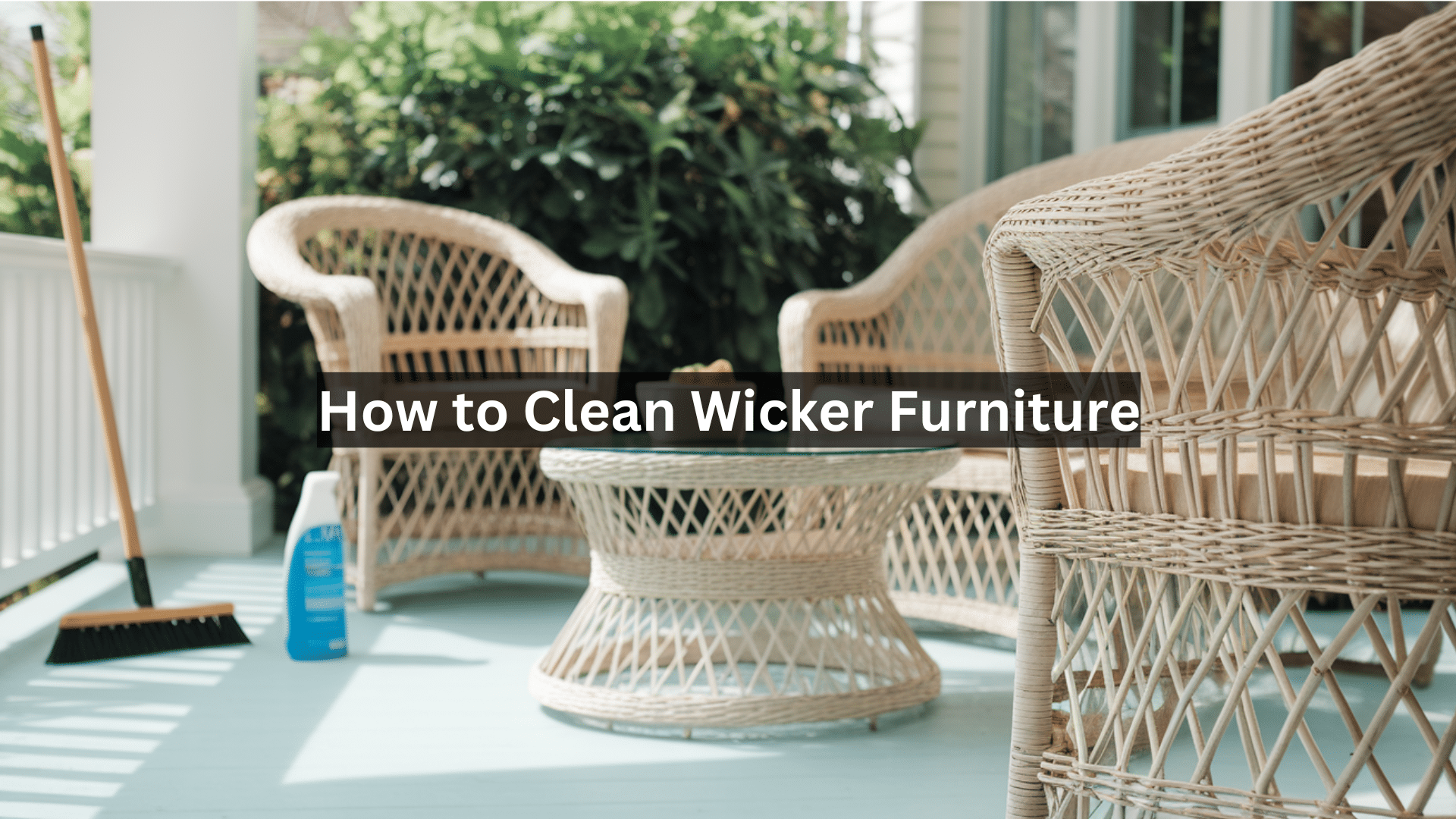Wicker furniture adds charm to any space, but cleaning it can be tricky. In this guide, I’ll show you exactly how to clean both natural and synthetic wicker furniture properly. You’ll learn which cleaning methods work best for different types of wicker and how to tackle common problems like stains and mold.
I’ve spent years testing these methods on my wicker pieces, making plenty of mistakes along the way so you don’t have to!
Whether your wicker is brand new or a cherished antique, these steps will help you keep it looking fresh without causing damage.
The best part? You probably already have most of the cleaning supplies you need at home. With the right approach, your wicker furniture can stay beautiful for many years to come.
Understanding Wicker – What You’re Working With
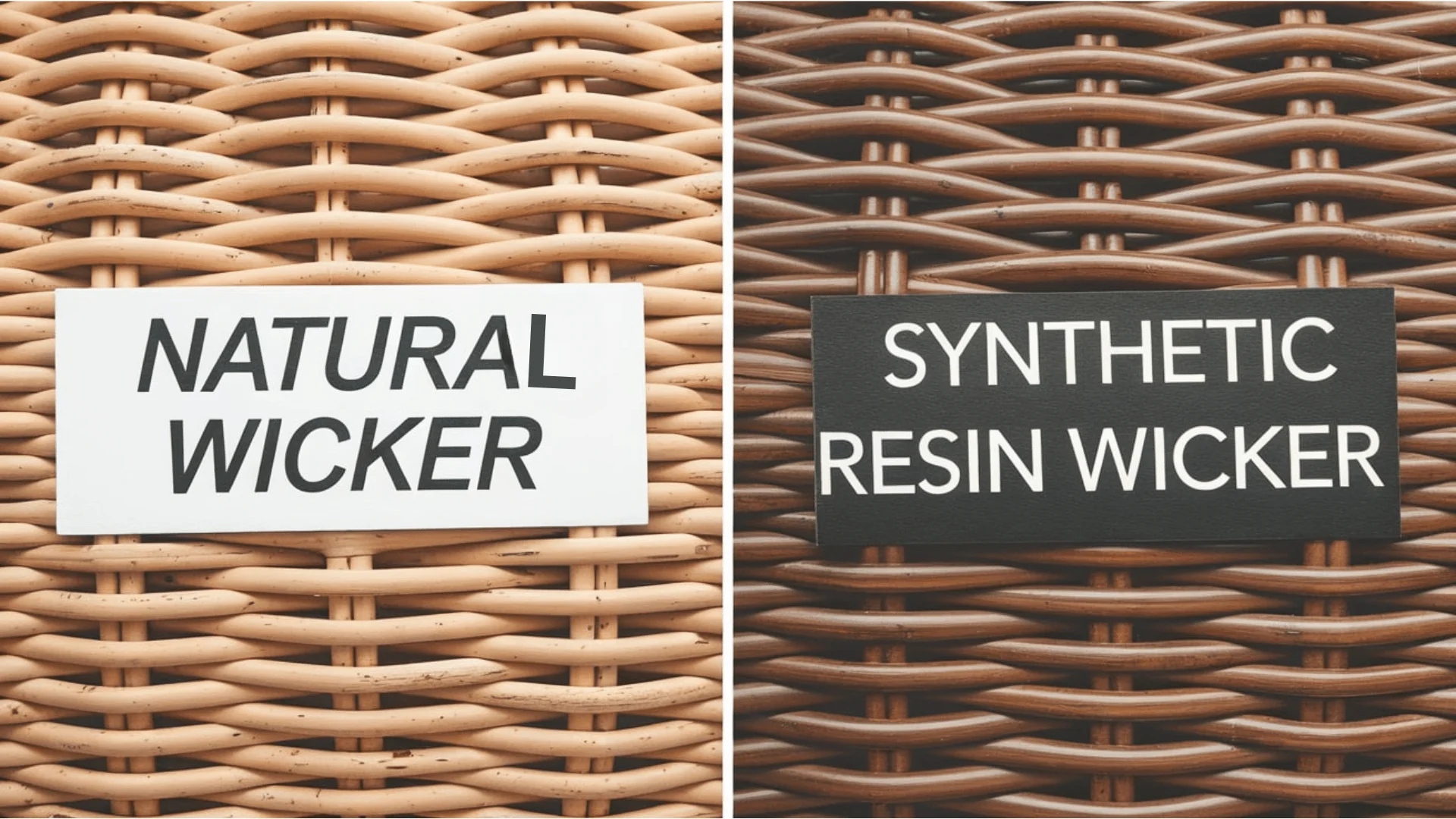
Natural wicker comes from plant materials like rattan, reed, willow, or bamboo. These fibers have a warm, organic look but are more sensitive to moisture. I once soaked my grandmother’s rattan chair and watched in horror as it warped while drying!
Synthetic wicker (also called resin wicker or all-weather wicker) is made from plastic fibers designed to look like natural materials. It handles rain, humidity, and cleaning solutions much better than natural wicker.
You can tell which type you have by looking at the weave. Natural wicker has slight color variations and sometimes small imperfections. Synthetic wicker looks more uniform and often has a subtle sheen.
Natural wicker can rot, split, or grow mold if exposed to too much moisture. Synthetic wicker resists these problems but can fade in sunlight or become brittle over time without proper care.
Step-by-Step Guide to Cleaning Wicker Furniture
Step 1: Gather Your Supplies
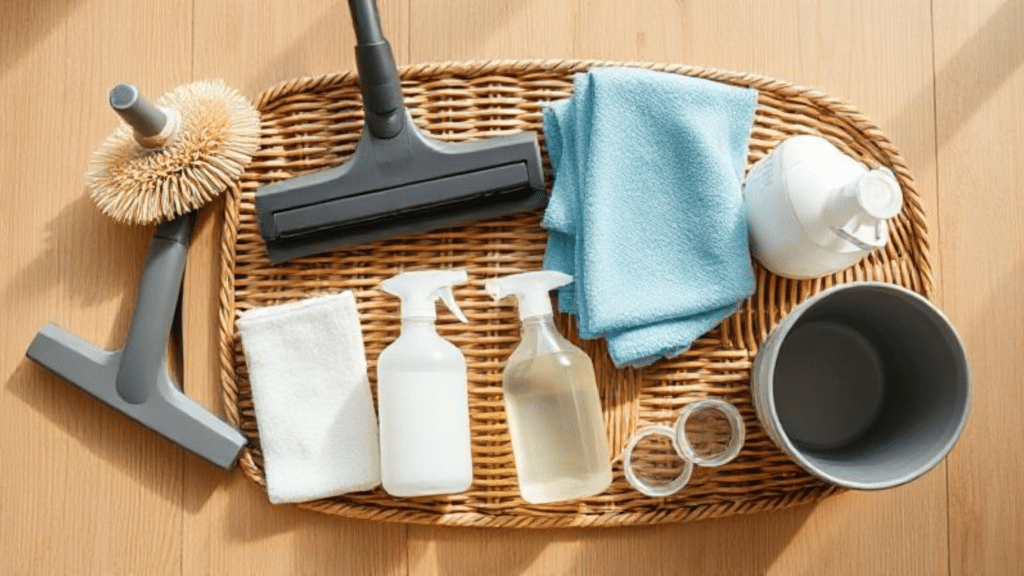
For all wicker types:
- Soft-bristle brush
- Vacuum with brush attachment
- Microfiber cloths
- Small bucket for cleaning solution
- Clean, dry towels for drying
For natural wicker:
- Mild dish soap
- White vinegar for mold problems
- Small toothbrush for tight spaces
For synthetic wicker:
- Garden hose with spray nozzle (for outdoor pieces)
- Mild detergent suitable for plastics
Avoid harsh chemicals like bleach or ammonia as they can damage both types of wicker.
Step 2: Routine Cleaning
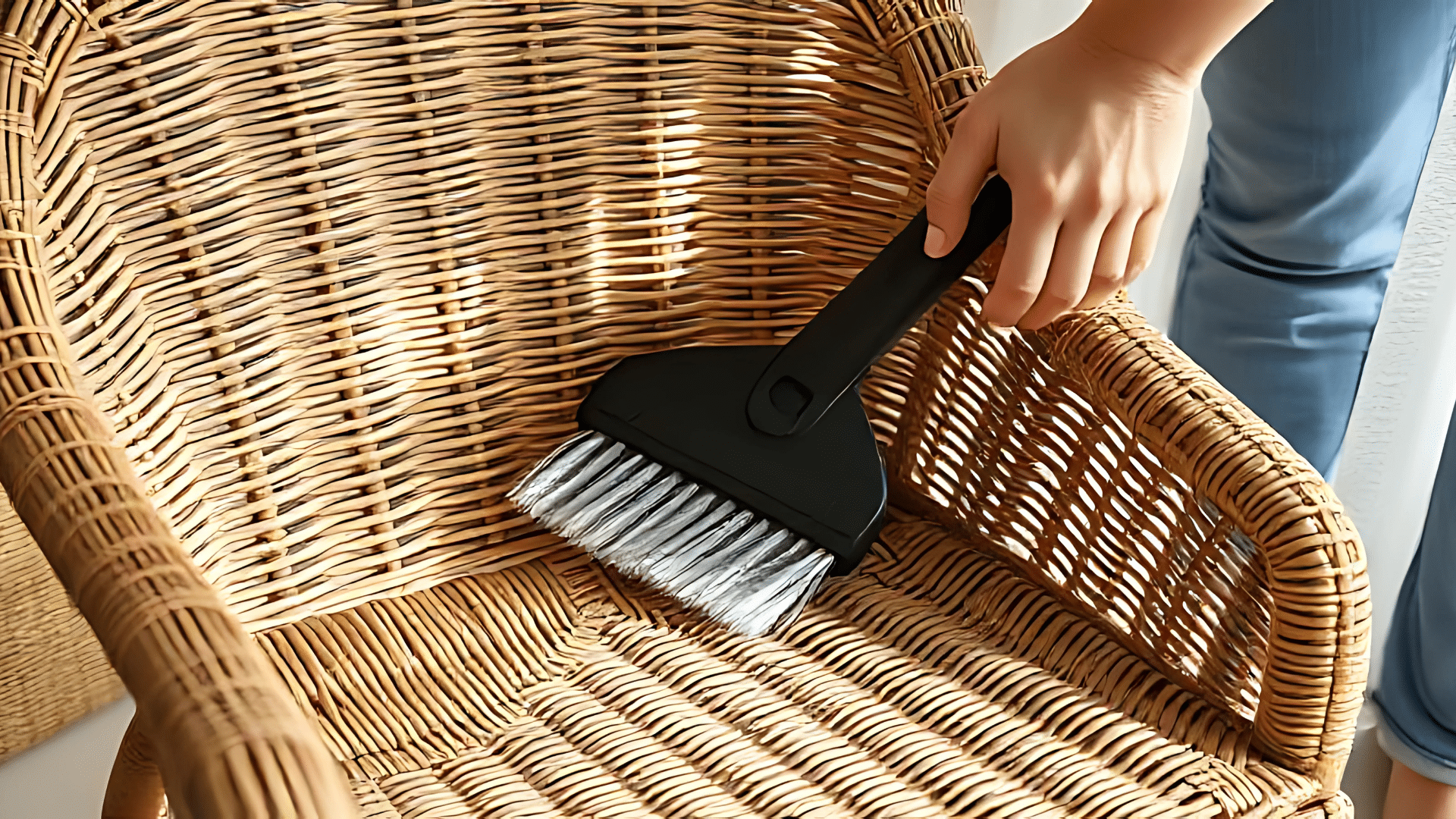
Remove dust and loose dirt:
- Use the vacuum on low suction with a brush attachment.
- Vacuum in the direction of the weave, not against it.
- For tight spaces, use a small, soft brush to loosen dirt.
Quick weekly wipe-down:
- Slightly dampen a microfiber cloth with plain water. It should be barely wet.
- Wipe with the grain of the weave, never scrubbing hard.
- Follow with a dry cloth to remove any moisture.
- Leave the cushions off for an hour to ensure complete drying.
This routine cleaning prevents dirt buildup and reduces the need for deep cleaning.
Step 3: Deep Cleaning Natural Wicker
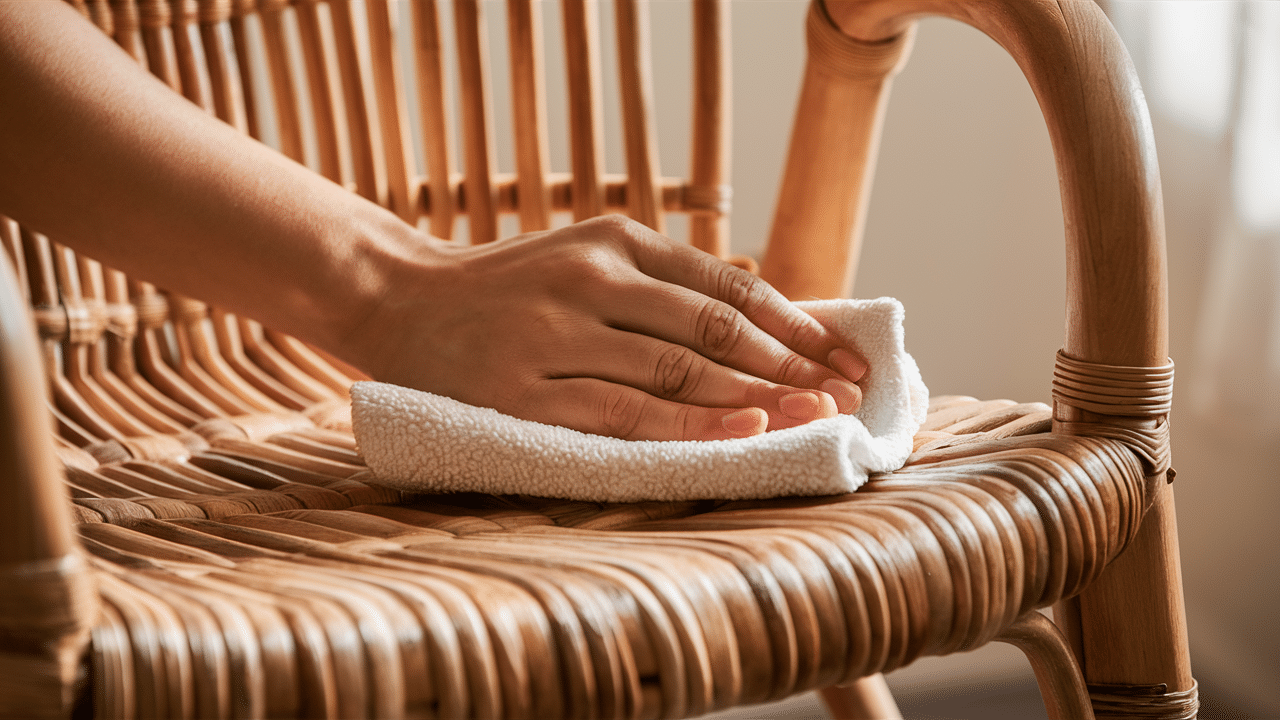
Preparing the cleaning solution: Mix 1 tablespoon of mild dish soap with 2 cups of warm water. Test on an inconspicuous area first.
Cleaning process:
- Dip a soft cloth in the solution and wring it until just damp.
- Clean in small sections, following the direction of the weave.
- For stubborn dirt, use an old toothbrush with a minimal solution.
- Follow with a clean, damp cloth to remove soap residue.
- Finish with a dry cloth to remove as much moisture as possible.
Drying: Place the furniture in a well-ventilated area out of direct sunlight. Use a fan nearby to speed drying. Never return cushions until completely dry – usually 24 hours.
The biggest mistake is using too much water. Never saturate the fibers, as this can cause warping, splitting, or mold.
Step 4: Deep Cleaning Synthetic Wicker
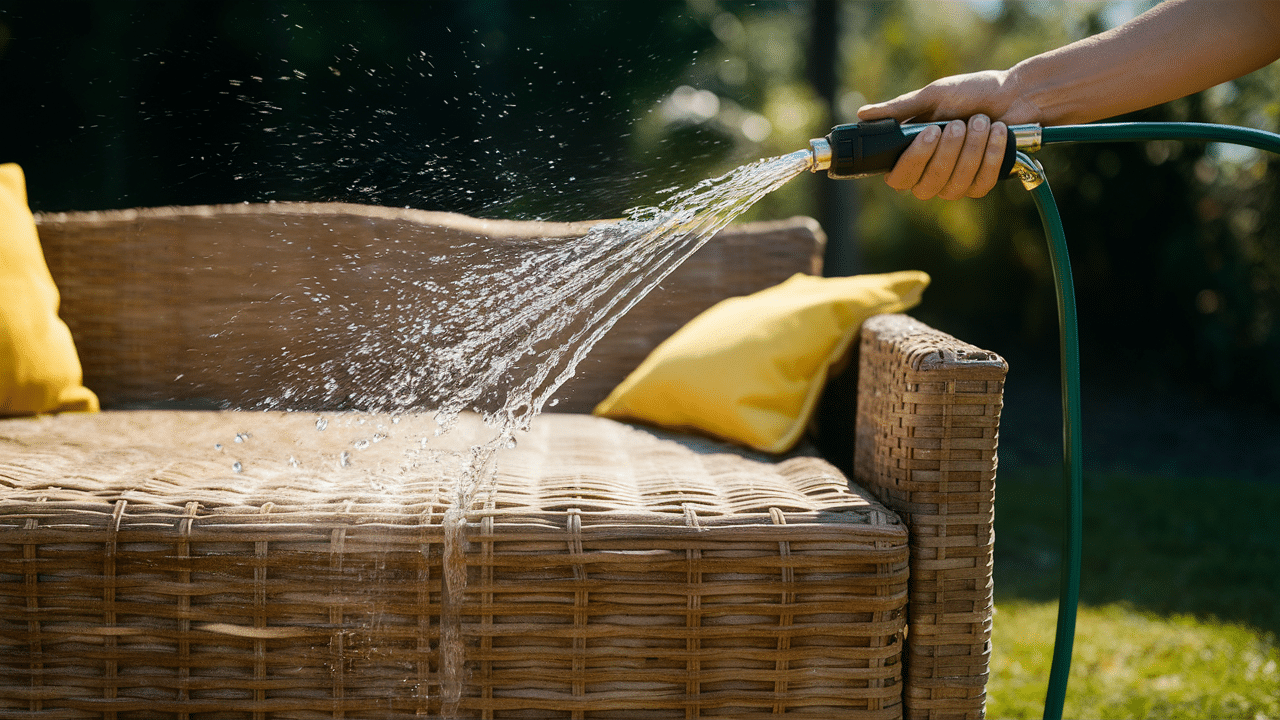
For moderately dirty furniture:
- Mix 2 tablespoons of mild detergent in a gallon of warm water.
- Apply the solution with a soft cloth.
- Clean with the weave pattern using a soft brush for crevices.
- Rinse thoroughly with clean water using a garden hose on gentle spray.
For heavily soiled outdoor pieces:
- Spray with a garden hose to remove loose dirt.
- Apply soap solution with a soft brush, working it into the weave.
- For stubborn areas, let the solution sit for 5 minutes.
- Rinse thoroughly, flushing out all soap from the weave.
Drying: Shake off excess water. Wipe down with dry towels. Leave in a sunny, breezy spot to dry completely.
Synthetic wicker dries faster than natural wicker but still needs to be completely dry before use.
Step 5: Removing Mold, Mildew, And Stains
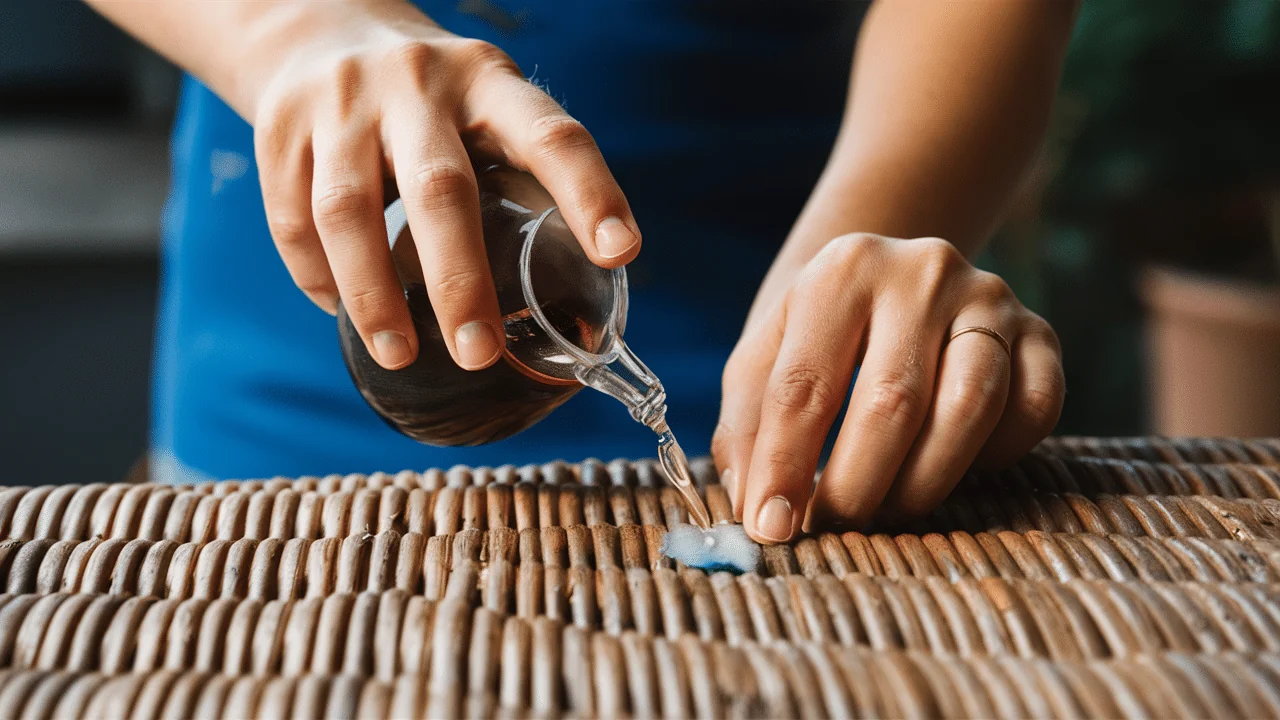
For mold and mildew on natural wicker:
- Mix equal parts white vinegar and water in a spray bottle.
- Spray lightly on affected areas (never saturating).
- Let it sit for 5-10 minutes to kill the mold spores.
- Gently scrub with a soft brush, following the weave.
- Wipe with a barely damp cloth and dry thoroughly.
For stubborn stains: For food or drink stains, make a paste of baking soda and water. Apply to the stain with a toothbrush. Let dry, then brush away the residue.
For synthetic wicker with severe staining: Try an oxygen-based cleaner according to package directions. Test on an inconspicuous area first.
When to consider refinishing: If natural wicker becomes discolored or develops a rough texture that cleaning doesn’t fix, it might be time to refinish it.
Step 6: Preventive Maintenance
Basic protection:
- Use cushions or pads to prevent body oils from transferring.
- Vacuum weekly to prevent dust buildup.
- Wipe spills immediately before they can soak in.
- Use coasters under drinks and plates.
For outdoor wicker:
- Use water-resistant but breathable furniture covers.
- Position away from sprinklers and under covered areas when possible.
- Check regularly for early signs of mold in humid conditions.
- Bring cushions inside during rain or heavy dew.
Seasonal care: Deep clean at the beginning and end of each season. In the fall, clean thoroughly before storing for winter. Store in a dry space if possible. If outdoor storage is necessary, use breathable covers and elevate furniture off the ground.
Extra Tips for Preserving Your Wicker’s Life
- For natural wicker: Apply lemon oil once a year to maintain flexibility. Rotate furniture periodically for even wear. Keep away from heating vents and air conditioners.
- For synthetic wicker: Apply a UV protectant spray each spring to prevent fading. Check joints twice a year. Don’t drag furniture across rough surfaces.
- Quick repairs: Tuck in loose ends and secure with a tiny dot of wood glue. Keep matching paint on hand for touch-ups of painted wicker.
These small efforts can extend the life of wicker furniture by years.
Conclusion
Cleaning wicker furniture doesn’t have to be a headache! With the steps I’ve shared, you can easily manage both quick touch-ups and deep cleaning. The key is being gentle yet thorough with natural wicker and a bit more direct with synthetic pieces.
I’ve found that regular cleaning prevents most serious problems before they start. Just 15 minutes of attention every week can save hours of deep cleaning later on.
Remember that each piece of wicker furniture is unique. Pay attention to how your pieces respond to different cleaning methods and adjust as needed. With proper care, your wicker can last for decades, keeping your home looking fresh and stylish with minimal effort.
Frequently Asked Questions
How Often Should I Clean Outdoor Wicker Furniture?
Wipe it down weekly with a dry cloth, and do a deeper clean monthly. After rain or heavy pollen, give it an extra wipe to prevent buildup.
Is It Safe to Pressure Wash Synthetic Wicker?
Yes, but only on the lowest setting, and keep the nozzle at least 2 feet away. High pressure can break the weave and force water into joints.
What’s the Best Homemade Cleaner for Natural Wicker?
Mix 1 tablespoon mild dish soap with 2 cups warm water. For tough stains, add 1/4 cup white vinegar to kill mold without damaging fibers.
How Can I Fix Wicker That’s Starting to Unravel?
Secure loose ends with a tiny dot of wood glue and a clothespin until dry. For bigger repairs, special rattan repair kits are available online.
Should Wicker Furniture Be Covered or Stored for Winter?
Ideally, it should be stored indoors in a dry place. If that’s not possible, use breathable covers and elevate pieces off the ground to prevent moisture damage.

